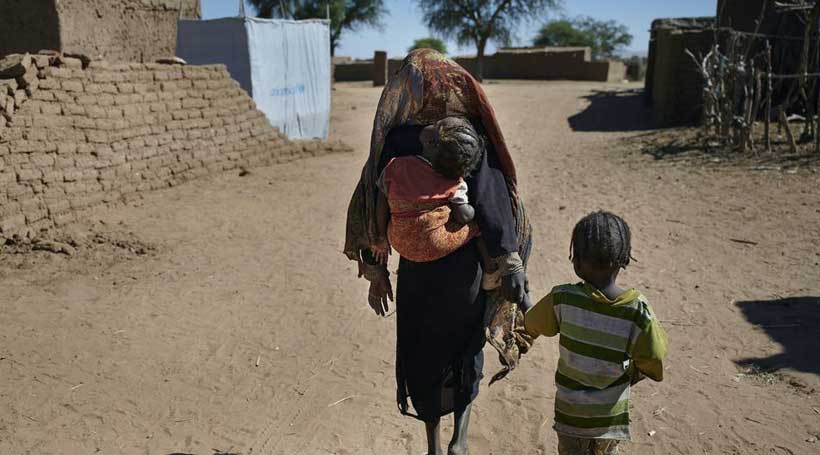For several decades on end, countries across the world have endured the devastating effects and consequences of conflict, war, poverty, and economic desperation. Due to constant conflict and desperation, media outlets and news outlets have broadcasted and covered such issues daily, providing knowledge and awareness regarding the conflict and steps to achieve peace-building/keeping. However, there is a clear bias seen from media attention and broadcasting for conflicts and crises, specifically in the Middle East and North African regions. The distinct relationships between the Middle East and Western powers have been far from peaceful and stable. Instead, such relationships are headed down a spiral dwarfed by the increasing political and economic tensions. Unfortunately, due to unstable relationships, such conflicts are covered less, rather than covered as much as conflicts that are deemed more “pressing” and “urgent” to Western countries. While the general public continues to go about their daily lives, they continue to go unaware of the dire and devastating conflicts/wars occurring in the region and lack knowledge and awareness of the issues. This is largely the result of the way news coverage is produced and presented in the United States, the Middle East, and around the world. In the United States, many facets determine how news about the Middle East is produced and presented.
The lack of media attention towards Middle Eastern conflicts is a pressing issue that deserves more scrutiny. In recent years, the Middle East has been plagued by multiple wars and civil unrest, from the Syrian civil war to the ongoing conflict in Yemen, to the ongoing genocide and destruction of Palestinians. Western media outlets prioritize conflicts that directly impact their own countries or citizens, rather than providing general coverage for global conflict. This bias leads to the lack of coverage of Middle Eastern conflicts, which do not directly affect Western interests. For example, conflicts such as Syria and Iraq have received “more” coverage due to their role in the broader fight against terrorism. All while conflicts in Yemen, Sudan, and Palestine have received far less attention despite their devastating humanitarian toll and urgent demand for aid and peacebuilding. Recently, with the Ukraine-Russian war, news outlets have covered and broadcasted daily basis coverage, providing awareness and knowledge regarding the conflict. With the constant coverage, the public was made aware of the issue and allowed for a consensus and demand for peacebuilding and for Russia to remove their troops from Ukraine. President Biden publicly demanded the immediate removal of Russian troops from Ukraine and to continue providing support, and aid, and allowing Ukrainian refugees to enter the United States. With the president’s public support, American citizens have protested Russia and have continued to show support for Ukraine, However, on the flip side, conflicts such as Sudan and Palestine have received a fourth of the coverage Ukraine and Russia received. The recent coverage for the Palestinian genocide and Israeli bombardment has shown to separate stories. The New York Times, Washington Post, and Los Angeles Times’s coverage of Israel’s war on Gaza showed a consistent bias against Palestinians, according to an Intercept analysis of major media coverage. The print media outlets, which play an influential role in shaping U.S. views of the Israeli–Palestinian conflict, paid little attention to the unprecedented impact of Israel’s siege and bombing campaign on both children and journalists in the Gaza Strip.
Instead, news outlets have simply only covered “anti-Israel” protests and have alluded to the bias against Palestinians. Rather than covering the devastating effects and destruction caused by the IDF in Palestine, media outlets focus only on what is deemed to “hurt” western powers.
Furthermore, the coverage of the Middle East is often oversimplified and sensationalized, leading to a lack of nuance in the reporting. This has perpetuated negative stereotypes and misconceptions about the region and its people, allowing for the continuation and normalization of discrimination to occur. As a result, many news outlets have chosen to prioritize stories that are more likely to generate viewership or readership, such as stories of hostages released by Hamas rather than covering the stories of the hostages released by the IDF. Rather than providing accurate and comprehensive coverage of events in the Middle East, the general public is made more aware of specific conflicts and given a “biased” opinion.
In conclusion, the lack of media attention towards the Middle East is a multifaceted issue that is influenced by a range of factors, including bias, oversimplification, political and social complexity, and government censorship. To promote a more informed and nuanced understanding of the region, the media must prioritize accurate and comprehensive coverage of events in the Middle East. By breaking down stereotypes and providing a more balanced portrayal of the region, the media can help to promote greater understanding and empathy towards the people of the Middle East.
